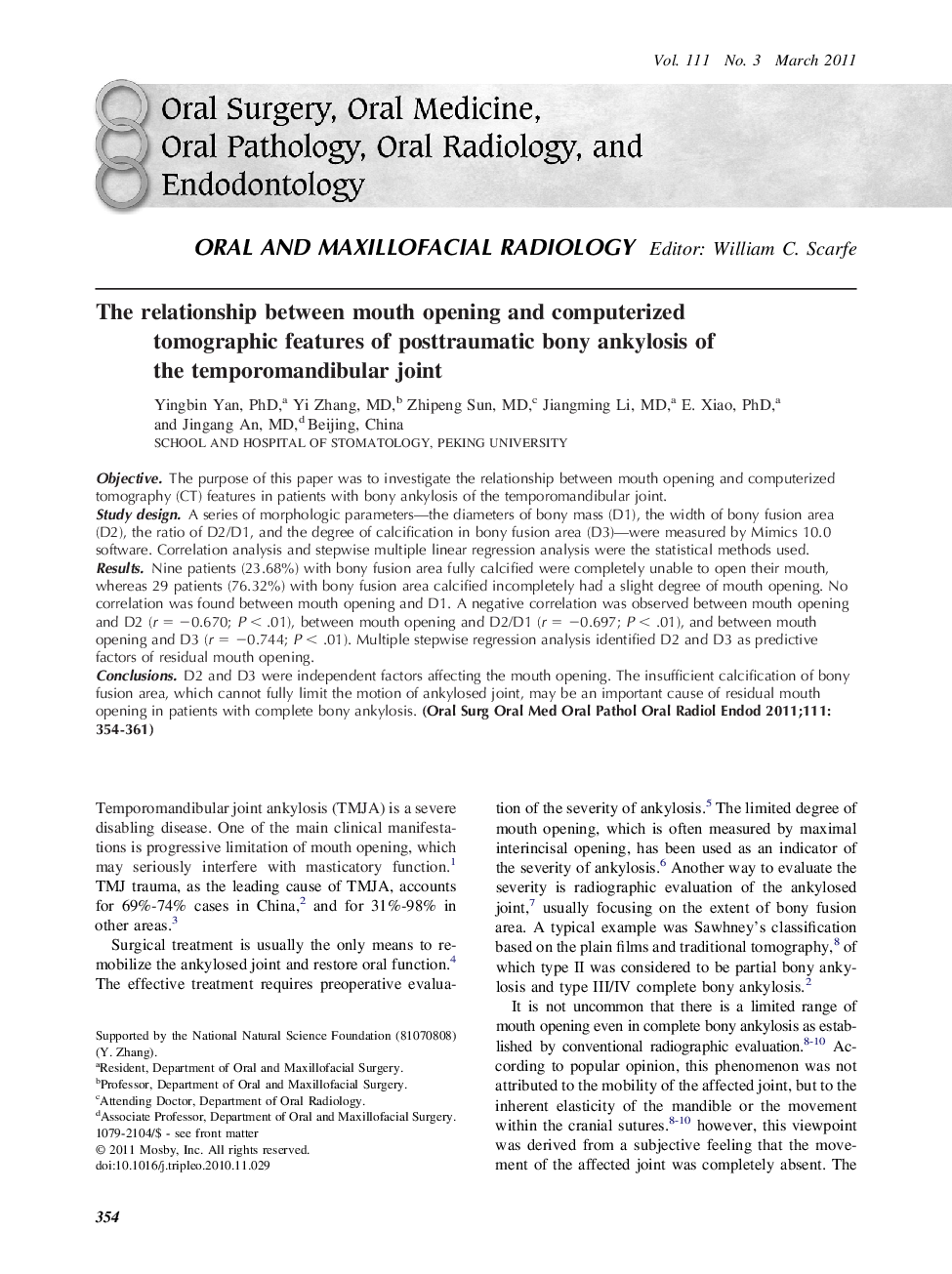| Article ID | Journal | Published Year | Pages | File Type |
|---|---|---|---|---|
| 6059942 | Oral Surgery, Oral Medicine, Oral Pathology, Oral Radiology, and Endodontology | 2011 | 8 Pages |
ObjectiveThe purpose of this paper was to investigate the relationship between mouth opening and computerized tomography (CT) features in patients with bony ankylosis of the temporomandibular joint.Study designA series of morphologic parameters-the diameters of bony mass (D1), the width of bony fusion area (D2), the ratio of D2/D1, and the degree of calcification in bony fusion area (D3)-were measured by Mimics 10.0 software. Correlation analysis and stepwise multiple linear regression analysis were the statistical methods used.ResultsNine patients (23.68%) with bony fusion area fully calcified were completely unable to open their mouth, whereas 29 patients (76.32%) with bony fusion area calcified incompletely had a slight degree of mouth opening. No correlation was found between mouth opening and D1. A negative correlation was observed between mouth opening and D2 (r = â0.670; P < .01), between mouth opening and D2/D1 (r = â0.697; P < .01), and between mouth opening and D3 (r = â0.744; P < .01). Multiple stepwise regression analysis identified D2 and D3 as predictive factors of residual mouth opening.ConclusionsD2 and D3 were independent factors affecting the mouth opening. The insufficient calcification of bony fusion area, which cannot fully limit the motion of ankylosed joint, may be an important cause of residual mouth opening in patients with complete bony ankylosis.
